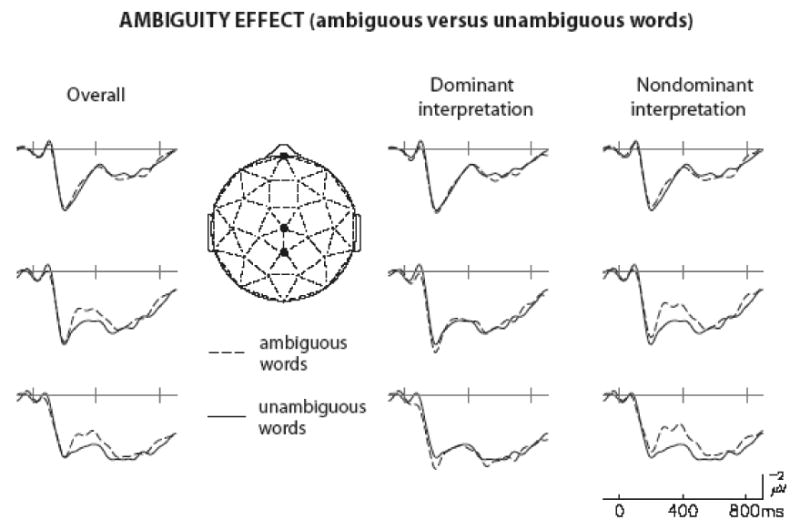Figure 5.

Grand average ERPs at 3 midline electrode sites for ambiguous words (dashed line) and unambiguous words (solid line) in Experiment 2. The leftmost column overlays the overall brain responses to ambiguous and unambiguous words, irrespective of meaning dominance. Replicating Experiment 1, in syntactically and semantically congruent sentences, N400 responses to ambiguous words are more negative than those to unambiguous words. The two columns on the right side of the figure contrast the brain responses to ambiguous versus unambiguous words when the context favors the dominant interpretation (middle column) or the nondominant interpretation (right column) of the homographs. The data clearly show that when the context picks out the dominant meaning of the homograph, the waveforms from the ambiguous and unambiguous words are indistinguishable. However, when the context picks out a nondominant meaning of the homograph, larger N400s are observed to the ambiguous words.
